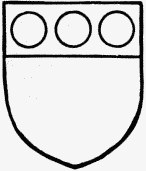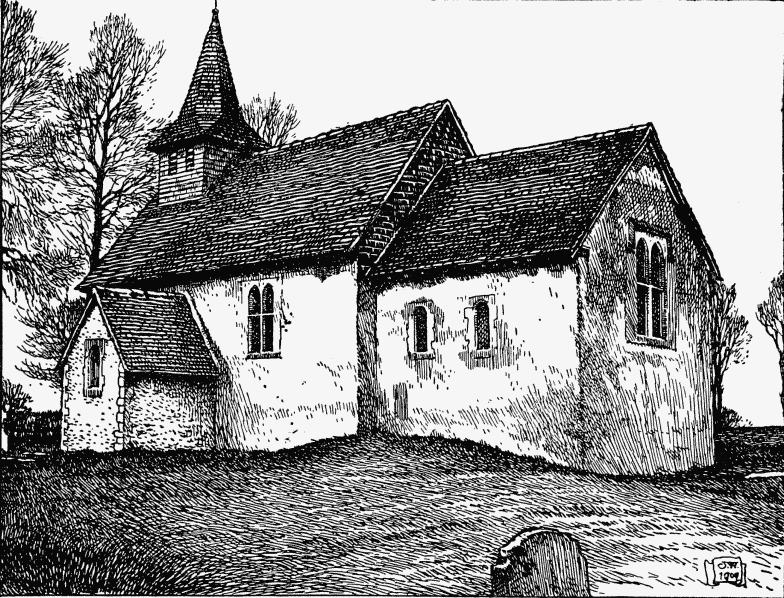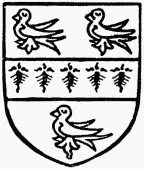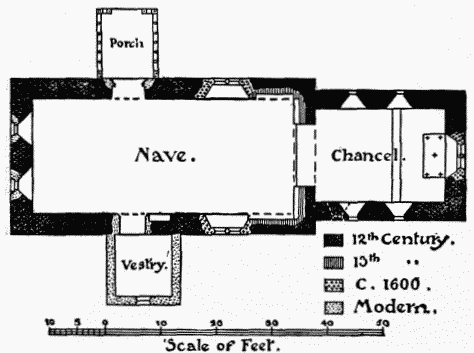A History of the County of Surrey: Volume 3. Originally published by Victoria County History, London, 1911.
This free content was digitised by double rekeying. All rights reserved.
'Parishes: Wisley', in A History of the County of Surrey: Volume 3, ed. H E Malden (London, 1911), British History Online https://www.british-history.ac.uk/vch/surrey/vol3/pp378-381 [accessed 5 May 2025].
'Parishes: Wisley', in A History of the County of Surrey: Volume 3. Edited by H E Malden (London, 1911), British History Online, accessed May 5, 2025, https://www.british-history.ac.uk/vch/surrey/vol3/pp378-381.
"Parishes: Wisley". A History of the County of Surrey: Volume 3. Ed. H E Malden (London, 1911), British History Online. Web. 5 May 2025. https://www.british-history.ac.uk/vch/surrey/vol3/pp378-381.
In this section
WISLEY
Wiselei (xi cent.); Wyseleye (xiii cent).
Wisley is a small parish 4 miles south-west from Weybridge station. It contains 1,076 acres. In shape it is roughly triangular, the apex southwards, and each side about two miles in length. It is bounded on the north by Walton-on-Thames and Byfleet, on the east by Cobham and Ockham, on the south and west by Ockham and Pyrford. The soil is mainly the alluvium, sand, and gravel of the Wey valley; the old natural course of the river runs through it, and Wisley Common on the south-east side is on the patch of Bagshot Sand which makes St. George's Hill and Cobham Common. There is no village of Wisley; merely some scattered farms and cottages. The road from London to Guildford, through Cobham and Ripley, passes through the parish.
Neolithic flints have been found in Wisley. One fine polished celt is in the Archaeological Society's Museum, Guildford. In 1906 an ancient dug-out canoe was found in the old river bed of the Wey. It is still, 1911, in the possession of the farmer on whose land it was found.
The parish is ecclesiastically attached to Pyrford. Slade Farm and a cottage were transferred from Wisley to Ockham 25 March 1883. (fn. 1) The children of Wisley Common attend Byfleet School.
Fox Warren is the seat of Mrs. Charles Buxton.
MANOR
The manor of WISLEY was held at the time of Domesday by Oswold, lord of Wotton; (fn. 2) and the overlordship follows the descent of Wotton (q.v.). Early in the 13th century Roger de Somerey was holding in sub-fee and demised the manor to Robert de Briwes, (fn. 3) who in 1243 leased it to Walter le Basle and Denise his wife. (fn. 4) Apparently this grant was for Walter's life, since Denise after her husband's death gave up her rights in the manor. (fn. 5)
Robert de Briwes died in 1275 holding it of Ralph Camoys of Wotton, and left a son and heir John, then forty years of age. (fn. 6) In 1282 John effected a settlement of the manor on his daughter Beatrice, (fn. 7) who soon after became the wife of Robert son of William Burnel. (fn. 8)

Camoys. Argent a chief gules with three bezants therein.
The exact date at which Wisley passed from the Briwes family is uncertain. (fn. 9) Lands in Somerset held by John de Briwes in 1285 were less than twenty years later in the possession of Robert Fitz Payne, (fn. 10) to whom Wisley ultimately passed. (fn. 11) In 1328 Robert Burnel, who had acquired the manor in right of his wife Beatrice, brought an action against Robert Fitz Payne, who had apparently ousted him from it. (fn. 12) The end of the suit has not been discovered, but since the Fitz Paynes remained in possession, they evidently established their right to the estate.
Robert Fitz Payne married Ela daughter of Sir Guy de Bryan, (fn. 13) but had no male heirs, and at Ela's death in 1355 the manor passed to her cousin (fn. 14) Robert second son of Lord Grey of Codnor, under the terms of a settlement made in 1324. (fn. 15) Robert de Codnor assumed the name of Fitz Payne (fn. 16) and died seised of the manor in 1392, (fn. 17) when the manor passed to his daughter Isabel, wife of Richard de Poynings. She did not long survive her father, but died seised of the manor in 1393, (fn. 18) holding of Thomas de Camoys, lord of Wotton. She left a son and heir Robert then fourteen years old. In 1434 Robert de Poynings settled the manor on his daughter Eleanor on her marriage with Henry Percy, son and heir of the Earl of Northumberland. (fn. 19) She died in 1483, and was succeeded in the possession of the manor by her son Henry Earl of Northumberland. (fn. 20) The earl was murdered in a riot in 1489, and shortly afterwards a dispute arose among the descendants of Sir Guy de Bryan touching the lands inherited from him. (fn. 21) Two of the parties in this suit were the Earls of Northumberland and Ormond, and in the ensuing division of property Wisley was evidently assigned to Ormond, for John Covert died in 1503 seised of the manor by Ormond's grant. (fn. 22) At Covert's death the manor passed to his son John, who died in 1503, (fn. 23) leaving only daughters. Wisley passed to his cousin Richard Covert, who died in 1547. (fn. 24) The manor then became the property of Giles Covert, a distant cousin of Richard, who retained possession until his death in 1556, (fn. 25) when he was succeeded by his brother Richard. (fn. 26) Richard Covert in 1594 joined with his son Anthony in conveying the manor to Sir John Wolley and Elizabeth his wife, daughter of Sir William More. (fn. 27) On the death of Sir John in 1596 his son and heir Francis, then thirteen years old, succeeded him. (fn. 28) Francis died without lawful issue in 1609, leaving descendants of his father's three sisters-in-law as his heirs. (fn. 29) Wisley passed to Sir Arthur Mainwaring, son of his mother's sister Anne, who was in possession in 1610. (fn. 30)

Wisley Church from the South-east

Covert. Gules a fesse ermine between three martlets or.
Sir Arthur conveyed the manor in 1641 to Sir Robert Parkhurst, (fn. 31) who died in 1651. His son died in 1674, and in 1677 it was sold to Denzil Onslow. (fn. 32) It passed under his will, after his widow's death in 1729, to Thomas Lord Onslow, and early in the 19th century it was exchanged for the manor of Papworth in Send with Lord King, (fn. 33) whose descendant the Earl of Lovelace is the present owner.

Plan of Wisley Church
A mill and a fishery were attached to the manor at the time of Domesday; they do not, however, appear again. (fn. 34)
In 1252 Robert de Briwes received a grant of free warren in his demesne lands of Wisley, provided that the lands were not in the king's forest. (fn. 35) Wisley, partly on the west bank of the Wey (old river), was to that extent in the forest of Windsor.
In 1199 King John granted the Earl of Leicester the right of free chase in Wisley; (fn. 36) and various members of the royal family seem to have enjoyed rights there at different times. (fn. 37)
CHURCH
The dedication of the church of WISLEY has been lost. It is a very small building consisting of a chancel 15 ft. 7 in. by 11 ft. 4 in., and a nave 31 ft. 5 in. by 14 ft. 1 in., both of late 12th-century date, to which has been added a wooden north porch, probably in the 17th century, and a small modern south vestry. The church was restored in 1872.
The east wall of the chancel has a two-light window, c. 1600, with a transom, set in the splayed jambs of the original round-headed 12th-century opening, the head of which has remains of ' masonry pattern' decoration, every third course being ornamented with four-leaved flowers as a diaper. The north and south walls of the chancel have each two 12th-century round-headed windows, repaired in the heads and sills, with splayed jambs and semicircular rear arches, also having remains of colour. At the south-east of the chancel is a square patch of the diaper pattern left free from whitewash, giving it the effect of a cross. At the south-west there is a blocked square-headed window low down in the wall, which seems to be a 13th-century insertion.
The chancel arch has jambs and semicircular arch of one plain order with a chamfered abacus at the springing, and on the west face of the jambs are incomplete two-centred arched recesses, adjoined by others in the north and south walls of the nave; they seem to be of 13th-century date, and were designed to give more room for the nave altars. In the north recess is a small star, the remains of painted decoration.
The side walls of the nave have each one window which is similar to the east window of the chancel, and the north doorway has been almost entirely restored in Bath stone, the only old parts being the 12th-century label, and the inner jambs and splayed head. The outer jambs are of two recessed orders with detached shafts having moulded bases and scalloped capitals, and the semicircular arch has zigzag ornament. The north porch is of plain timber construction, the lower portion being filled with modern brickwork.
The round-headed doorway to the vestry in the south wall is quite plain, and seems to be modern. Near its east jamb is a low round-headed recess of uncertain date, and west of the doorway is a consecration cross painted on the wall, which seems to be one of the original set. In the west wall of the nave are two round-headed windows with original inner jambs and rear arches, but modern outside, with small shafts in the jambs. Over the west end of the nave is a small wooden bell-turret containing one bell, and capped by an octagonal spire which, with the sides of the turret, is covered with shingles. All the walls are built with a dark brown ironstone conglomerate roughly plastered, and have no dressed stone angles, and the roofs, which retain much of their old timbers, are tiled. The internal fittings are all modern except a late 16th-century wrought-iron hour-glass bracket fixed on the wall near the pu pit.
The plate comprises a cup of 1713, a paten of 1714, and a plated flagon.
There are two books of registers, the first containing entries of baptisms, marriages, and burials from 1666 all mixed together; after which follow separately marriages from 1669 to 1752, baptisms from 1670 to 1798, and burials from 1699 to 1798. The second book contains marriages from 1754 to 1812. The baptisms and burials from 1798 to 1812 are missing. There is also a book of churchwardens' accounts from 1669, and in another book are the affidavits for persons buried in woollen from 1680 to 1697.
ADVOWSON
There was a church at Wisley at the time of Domesday. (fn. 38) The advowson followed the descent of the manor (though the Black Prince presented in 1345 and in 1370) until the beginning of the 19th century, when the manor was transferred to Lord King. The Onslow family then retained the advowson and still hold it. The living is now held with Pyrford.
CHARITIES
Smith's Charity is distributed as in other Surrey parishes.
The parish books record the request, 2 May 1837, to the Poor Law Commissioners for leave to sell a double tenement which had belonged to the parish from time immemorial, and a single tenement erected on land inclosed from the waste about thirty years before, for the advantage of the parish. The present advantage resulting is unknown.